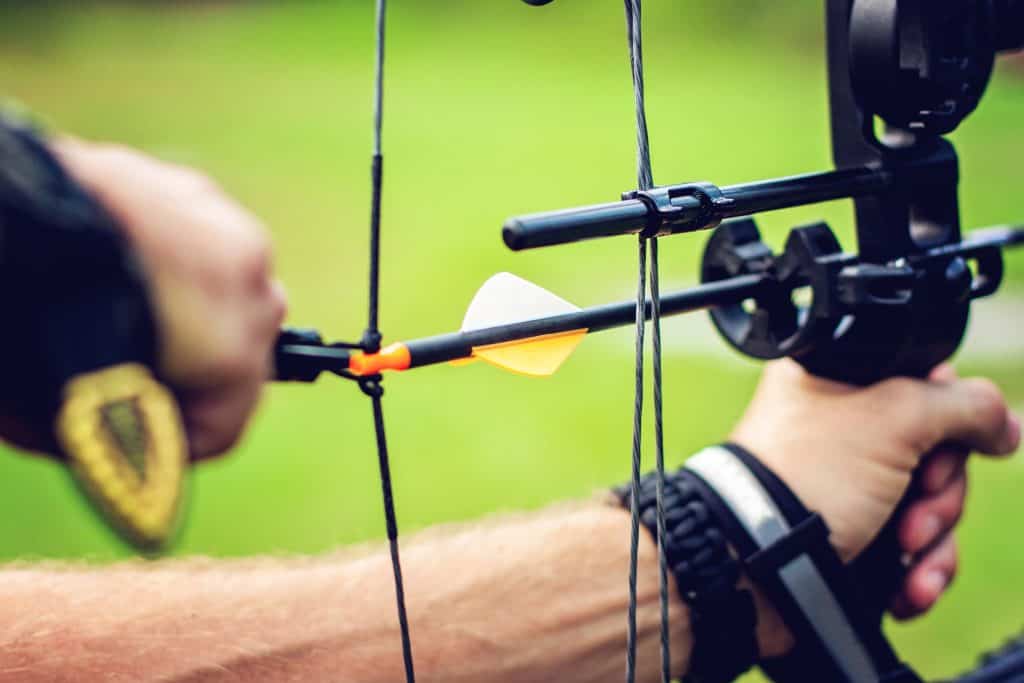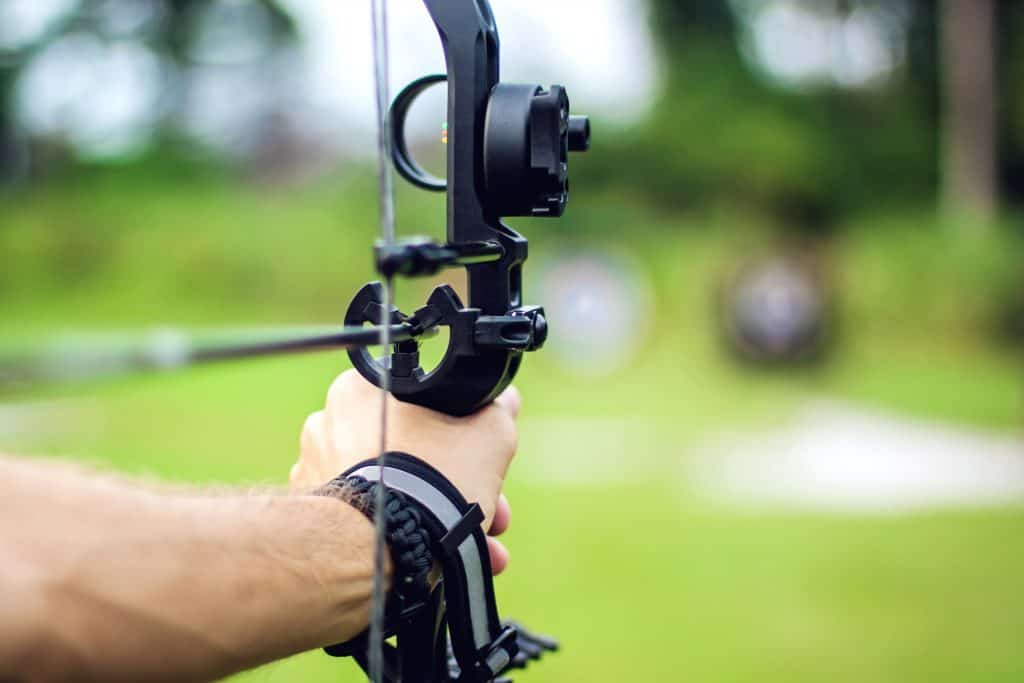
If you’re a compound bow kind of archer, you might have had the fear that if you play with your bow too hard, that your bowstring might break. A string breakage could cause serious injury to you and others around you.
And if you’re a bowhunter or even a field archer, you want to make sure that your bow is in tip-top shape, especially during times when you really need your bow, whether it be to make that perfect kill or that perfect bulls-eye.
So is bowstring breakage something that you need to be worried about?
The answer is yes. Due to a lack of proper shooting form, bow torque, and a lack of knowledge of how to properly wield the bow, the bowstring on a compound bow can either be derailed or break.
So as to avoid injury and damages that could come from a bowstring breakage or derailment, it’s a good idea to know how to avoid string breakage, including proper shooting form and signs to look for in the case of future breakage, and what to do if your string breaks.
So as you read this article, you might want to make a mental checklist for yourself, and think about what you might be doing to increase the likelihood of your compound bow’s string breaking, and what you can do to fix it while avoiding injury and maintaining accuracy and good form!
Why the Bowstring Broke
Whether you’re just a beginner when it comes to archery, or you’ve been shooting for many many years, string breakage is not something that’s unusual. It can happen to archers of every type of experience.
While there are many reasons as to why a bowstring has broke or become derailed, there are generally are a couple of reasons that you’ll frequently hear about.

One of them is the lack of proper care.
This is probably the main reason why bowstring’s break. Bowstrings are generally supposed to last for about two to three years, but if they aren’t properly taken care of, then the life of the string can be shortened significantly.
The string of the bow is normally covered in wax or some sort of resin, which is what keeps the string smooth and the strands grouped together.
However, if one fails to properly wax the string, or stores the bow in a hot area, or waits too long to change the bowstrings, then the likelihood of the string breaking increases.
Another reason why bowstrings break is because of a lack of proper shooting form.
Because compound bows have that unique feature of a set of cams that help produce more energy and accuracy, the bowstring is attached to the cams and can be derailed from the tracks of the cam fairly easily, especially if your shooting form stinks.
If you torque your bowstring out of alignment with the cams, then the bowstring is likely to snap out of the cams and could cause serious injury.
The last reason for bowstring breakage that you hear frequently is dry-firing.
If you’ve been in the archery world for at least a little while, you know that you should never dry fire a bow. Ever.
So just in case you didn’t get that the first time, never ever dry-fire a bow!
And for the beginners who don’t know what dry-firing is, dry-firing is essentially when you shoot a bow without an arrow. Dry-firing is extremely dangerous.
When you are shooting a bow normally with an arrow nocked in, the bow (especially compound bows), when drawn back, generates energy that is released into the arrow, which is what propels the arrow forward.
When you dry-fire, all that energy that has been generated by the bow has nowhere to go, so the leftover energy radiates throughout the body of the bow and can be disastrous.
Not only is there a possibility of your bowstring breaking, but the other parts of your bow can be severely damaged from dry-firing.
So basically, don’t dry fire.
Why It’s Important to Prevent Bowstring Breakage
This may seem like a very obvious answer, but you really don’t want your bowstring to break if possible.
Of course, you don’t want your bowstring to break, but it’s really important that you take the necessary precautions in order to deter an accident with your bow.
Well, first of all, you can be seriously injured by the bowstring coming back and hitting you. It could result in bruises, scars, bleeding, large swelling, and if it hits your face or your eyes, be potentially blinding.
You just have to look up “bowstring snap injury” to see a large gallery of injuries that have resulted from bowstring breakage.
This below video is a great video that shows what happens when your compound bows string breaks, and it also explains why and how your string breaks. This guy was fortunate to just have a large welt on his arm as well as a long white mark from the string.
But in addition to this, replacing strings can be a real hassle. While you’re originally supposed to replace your bowstring every two to three years, it can be a process, especially in the case of compound bows, which are a little trickier to re-string.
You need a bow press, which is a press that moves the limbs of the bow to relieve tension so that you can properly perform the necessary maintenance needed for your bow.
And since most people normally don’t have a bow press laying around at home, you have to go to a pro shop to have a bow technician work on the bow for you.
And after you’ve changed the bow, you technically still have to “work” the bowstring in, and it’s necessary to shoot the bow 100-200 times in order to get it totally worked in, and then you have to take the bow to the pro shop again to get it checked again by the technician there.
So if you’re on a time crunch for a competition or a scheduled hunt, you probably won’t have much time to be able to go and fix your bowstring in a hurry if your string breaks.
The Right Shooting Form
So it’s important to make sure that you have proper shooting form with your compound bow. The better the form, the more likely you are to avoid string torque and string breakage. Your muscles will also thank you for making sure that they aren’t twisting weird.
The basics of having good shooting are:
- Making sure that your feet are hip-length apart
- There is a line from your head to your shoulders that leads to your hips, and then to your feet – make sure they’re aligned!
- You don’t want to be bending forward, head or anything else!
- Your release hand is somewhere on your jaw
- Your body is in a nice T-shape
- The arm holding the bow is straight, the one drawing has a gentle bend in it
And this nice pretty shooting form comes with practice, but it’s important to practice and always be mindful of what your form is so that you can continually modify it. Archers both beginner and advanced always need to work on their form!
Another thing that helps avoid string torque is being conscious of the placement of your hand on the grip of the bow. Make sure to press the grip more with your palm than your fingers, and try to establish a pattern of holding the same spot the same way every time.
And if you’re using a compound bow, you might find that using a mechanical grip to pull and release the bowstring makes it a little easier to avoid torque and improve accuracy with your bow.
Proper Bowstring Care
Now that we’ve covered the correct shooting form that is essential for shooting, we’ll talk a little bit about proper bowstring care.
So as I’ve said probably three times already, it’s important to get your strings and cables replaced every two to three years. Just like a car, your bow is a tool and therefore needs constant maintenance to keep it running smoothly.
Bowstrings are normally covered with wax or some form of resin to keep the strands of the string together and to combat some of the friction that comes from shooting. Make sure that if your bowstring is looking dry and fuzzy to wax it thoroughly.
But if you see that the strands are starting to come apart, you should seek to change the bowstring right away.
And because the string is covered in wax, avoid leaving your bow in hot places, as the heat will melt the wax and then result in a weaker string. Storing your bow in cool and dry places will help prolong the life of your bow.
If you follow these steps and make sure to be vigilant in maintaining your bowstring, then you’ll stay safe, keep your bow and its string in proper function as long as possible, and still have a great time shooting with your compound bow!
Happy Shooting!
